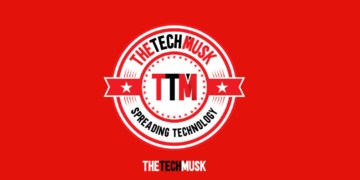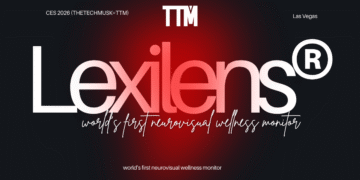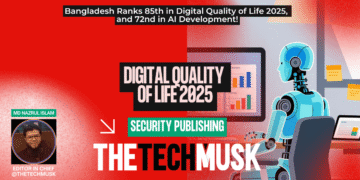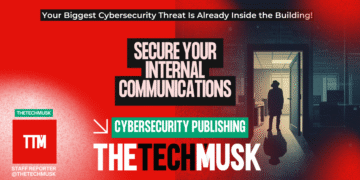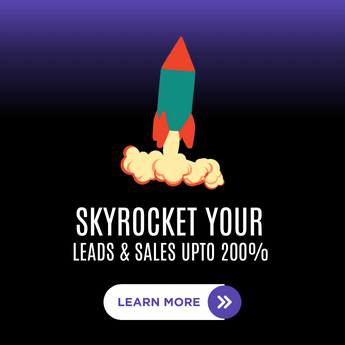In 2022, the industry witnessed a plethora of events and trends. The incessant ransomware and other malware attacks that plagued organizations globally were certainly among those that made headlines. From Twitter to Uber to student loan servicer Nelnet Servicing, over 4,100 publicly disclosed data breaches occurred in 2022 which led to more than 22 billion records being exposed.
Regarding the most notable events and trends to watch for in 2023, executives from Datadobi, DH2i, Folio Photonics, Retrospect, and StorCentric had this to say:
Carl D’Halluin, CTO, Datadobi (www.datadobi.com):
“Organizations will be forced to look for new approaches to manage unstructured data growth in 2023. Many have already noticed that the pace of unstructured data growth is snowballing exponentially faster than it has in the past. This leads to increased costs, as companies have to buy more storage, and the introduction of risk, as the organization has less knowledge about the data as it ages in its network. Organizations need new solutions to minimize the financial impact and risk their business faces.
Furthermore, much of this unstructured data is stored in network-attached storage (NAS). This is because many applications haven’t yet been redeveloped to leverage object storage. So, much of an organization’s unstructured data will continue to be stored on-premises in 2023. Because of this, public cloud providers will form more relationships with traditional on-premises NAS vendors. They will offer branded, cloud-based, managed file services. These services will benefit customers because they have a simple “on-ramp,” they preserve pre-existing documentation and processes, and they take care of the underlying hardware and operating environment for the customer.”
Steve Leeper, Vice President of Product Marketing, Datadobi (www.datadobi.com):
“In 2023, businesses are going to have to prioritize environmental, social, and governance (ESG) policies to gain a competitive advantage. A recent PwC report found that over 80% of individuals are more likely to buy or work for an organization that stands for ESG best practices. And as of this year, only a little more than half of the companies have an ESG plan in place or are actively planning for one.
Unstructured data plays a pivotal role in the success of an organization’s ESG policies. A holistic approach to reducing carbon footprint should bring unstructured data management into the conversation. When done with the right solutions, unstructured data management can enable organizations to move away from legacy models where data is stored in a digital ‘landfill.’ In these environments, data takes up money, space, and precious resources but gives very little in return. Organizations should be able to monitor their key ESG indicators and take actions on unstructured data to achieve their targets by moving data to the cloud or less polluting storage, deleting redundant, obsolete, or trivial (ROT) or orphaned data, enabling consolidation, reuse, and earlier shutdown of hardware. By doing so, IT leaders get a win-win of an effective approach to unstructured data management that also delivers on ESG objectives.”
Don Boxley, CEO, and Co-Founder, DH2i (www.dh2i.com):
“In 2023, I predict that SDP will finally pull ahead of VPNs as the dominant technology for remotely connecting people and devices. One of the most critical drivers here will be awareness and acceptance. More and more IT professionals are already using it successfully to connect to the cloud or on-premises applications from wherever they are – from the airport to the home office to the local coffee shop, and they are talking about it.
Likewise, VPNs will slip in popularity as there is now a viable solution that can help IT, professionals, to overcome its inherent challenges. VPNs are buggy and the performance has always been spotty. VPNs are simply not reliable from a performance standpoint. And of course, the security issues are there, because of the way it is designed – inherent in the architecture. It allows for fast and easy lateral network attacks from bad actors. Previously, a relatively small portion of the workforce was dependent on it. So, the problems were more self-contained. However, over the past few years, with more and more people and organizations dependent on it, the risks have multiplied significantly.
In 2023, I also predict that developers will demand solutions that enable highly available cloud-native SQL Server availability groups (AGs) in containers, including support for Kubernetes (K8s) clusters – across mixed environments and across any type of infrastructure or cloud.
Kubernetes alone struggles to meet SQL Server production database HA requirements due to its prolonged pod/node-level HA failover of 2-10 minutes. What is required is a solution that can solve this problem by enabling highly available AG support in Kubernetes, which is an essential component to using stateful containers in production. The solution(s) must seamlessly complement K8s’ pod/node-level cluster HA, allowing Microsoft SQL Server users to confidently deploy HA SQL Server containers in production while meeting database HA requirements. Bottom line, the ideal solution must combine with Azure Kubernetes Services and SQL Server to create a single, holistic solution for containerized SQL Server.”
Steve Santamaria, CEO, Folio Photonics (https://foliophotonics.com/):
“Data Storage will take on global warming. As the world continues to strive toward Net Zero, additional industries will come under the microscope. One industry heavily influenced by this will be the data storage industry. By 2025, data centers will consume >3% of the world’s electricity, and storage can make up anywhere from 10-30% of a data center’s overall energy consumption. When there is a specific industry accounting for >1% of global electricity consumption, people start to take notice and ask what can be done to lessen the power burden. This will create an industry-wide push toward sustainable storage technologies that are more energy-efficient than legacy hardware.
This sustainability push comes at an intriguing time in the industry as well. We have recently seen newer SSDs actually use more energy than HDDs, which has not been the case until now. HDDs will continue to push toward consuming less energy, but their technology will continue to struggle in terms of power consumption per TB relative to others. For meaningful sustainability advancements to be made with HDD technology, the idle energy consumption will need to be lowered significantly. Tape will continue to show that it is the most energy-efficient product on the market, but the tight window on operating and storage conditions will be a looming cloud on their sustainability narrative. For meaningful sustainability advancements to be made with tape technology, their operating conditions will need to be made significantly wider.
Next, cold storage will steal the spotlight. There has always been considerable interest in hot storage, but the drive to $0/TB has started increasing momentum toward the cold storage segment. As new applications that generate and analyze massive amounts of data are developed, there will be an overwhelming interest in developing new cold storage strategies to keep data lakes cost-efficient, energy-efficient, and secure for long periods of time. We have already seen an increase in extremely high-capacity HDD, optical, and tape technologies being researched in many labs across the globe. It will be a growing challenge to keep cold storage accessible while keeping it cost-efficient. This will create an influx of investment in current technologies paired with additional investment in new technologies that have the potential to disrupt this emerging industry. We have seen this trend start to begin in 2022 as there were high-capacity HDDs released, new tape libraries announced, and rising interest in new types of optical storage media and DNA storage.
And in 2023, immutable storage will becomes increasingly commonplace. It is no secret that data has become a strategic asset. It is directly or indirectly tied to profitability for nearly every organization in the world today. Unfortunately, this means it’s becoming a high-value target for cybercriminals. The ever-growing threat of malicious actors will drive up demand for immutable storage. Not only will immutable snapshots be in high demand, but immutable media will find itself being implemented in storage architectures across every industry.
Last but not least, while I believe these trends to be those with the most momentum in the upcoming year, I do not believe they are the only ones we will see. New, emerging business models such as Hardware-as-a-service will grow in popularity and storage-as-a-service providers should see an uptick in market share as well. Lastly, the fragile dynamics of the industry will come under fire even more so in the upcoming year as the threat of a vertical market failure continues to rise. All of these trends, amongst others, will create an interesting upcoming year for the storage industry.”
Brian Dunagan, Vice President of Engineering, Retrospect (www.retrospect.com):
“Freedom and flexibility will become the mantra of virtually every data management professional in the coming year. In particular, data management professionals will seek data mobility solutions that are cloud-enabled and support data migration, data replication, and data synchronization across mixed environments including disk, tape, and cloud to maximize ROI by eliminating data silos. We will likewise see an uptick in solutions that support vendor-agnostic file replication and synchronization, are easily deployed and managed on non-proprietary servers, and can transfer millions of files simultaneously – protecting data in transit to/from the cloud with SSL encryption.
Ransomware will remain a huge and relentlessly growing global threat, to high-profile targets and to smaller SMBs and individuals as well. There are likely a few reasons for this continuing trend. Certainly, one is that today’s ransomware is attacking widely, rapidly, aggressively, and randomly – especially with ransomware as a service (RaaS) becoming increasingly prevalent, looking for any possible weakness in defense. The second is that SMBs do not typically have the technology or manpower budget as their enterprise counterparts.
While a strong security defense is indispensable, we will see that next year security leaders will ensure additional measures are taken. Their next step will be enabling the ability to detect anomalies as early as possible in order to remediate affected resources. Large enterprises, SMBs, and individuals alike will need a backup target that allows them to lock backups for a designated time period. Many of the major cloud providers now support object locking, also referred to as Write-Once-Read-Many (WORM) storage or immutable storage. Users will leverage the ability to mark objects as locked for a designated period of time, and in doing so prevent them from being deleted or altered by any user – internal or external.”
Surya Varanasi, CTO, StorCentric (www.storcentric.com):
“The ransomware threat will continue to grow and become increasingly aggressive – not just from a commercial standpoint, but from a nation-state warfare perspective as well. Verizon’s 2022 Data Breach Investigations Report, reminded us how this past year illustrated, “… how one key supply chain incident can lead to wide-ranging consequences. Compromising on the right partner is a force multiplier for threat actors. Unlike a financially motivated actor, nation-state threat actors may skip the breach altogether, and opt to simply keep the access to leverage at a later time.” For this reason, channel solutions providers and end users will prioritize data storage solutions that can deliver the most reliable, real-world proven protection and security. Features such as lockdown mode, file fingerprinting, asset serialization, metadata authentication, private blockchain, and robust data verification algorithms, will transition from nice-to-have to must-have, while immutability will become a ubiquitous data storage feature. Solutions that do not offer these attributes and more won’t come even close to making it onto any organization’s short-list.
Consumer attitudes towards online security and privacy will also heighten. A key driver here will be that while enterprises getting hacked and hit by ransomware continue to make the headlines, cybercriminals have begun to hit not just enterprise businesses with deep pockets, but SMBs and individuals. SMBs and individuals/consumers are actually far more vulnerable to successful attacks as they do not have the level of protection that larger enterprises have the budgets to employ. As work from home (WFH) and work from anywhere (WFA) remain the paradigm for many across the data/analytics field, they will require data protection and security solutions that can also protect them wherever they are.
In the coming year, the ideal cybercrime defense will be a layered defense that starts with a powerful password and continues with an Unbreakable Backup. As mentioned, backup has become today’s cyber criminals’ first target via ransomware and other malware. An Unbreakable Backup solution however can provide users with two of the most difficult hurdles for cyber criminals to overcome – immutable snapshots and object locking. Immutable snapshots are by default, write-once-read-many (WORM) but in the coming year, sophisticated yet easy-to-manage features like encryption where the encryption keys are located in an entirely different location than the data backup copy(ies) will become standard. And then to further fortify the backup and thwart would-be criminals in the coming year we will see users leveraging object locking, so that data cannot be deleted or overwritten for a fixed time period, or even indefinitely.”

